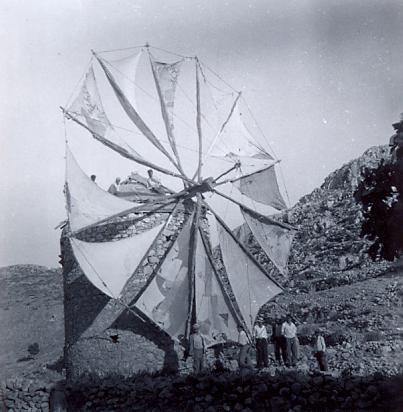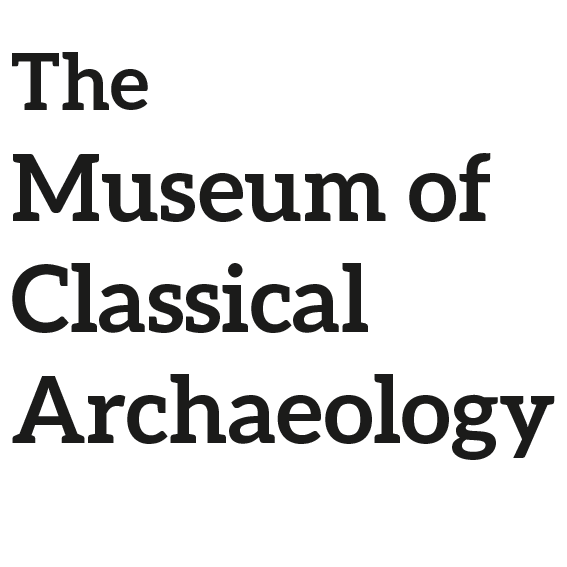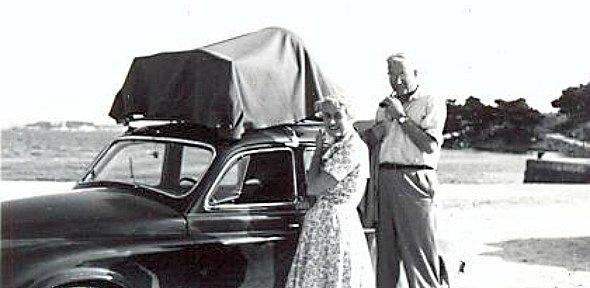
The man behind the travels
In a green A5 lined notebook, entitled 'Tour in Asian Minor 1939', George describes his journey with a Mr Raggio, 'a very pleasant fellow' and a couple of local guides. Beginning in Ak Kaya on 3rd May and arriving at Smyrna on 17th May, this is the only surviving diary of George's travels, and was written when he was 36 years old.
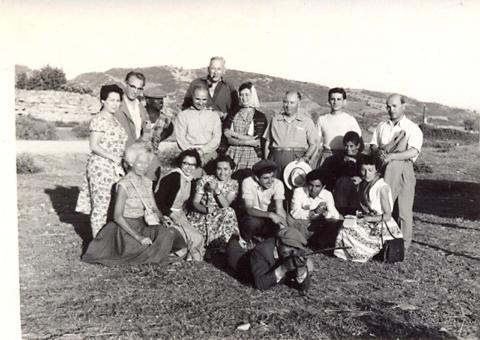
George (centre back), Jane Bean (front far right) unknown location,1950-60 (D5.2)
George would often travel on foot, but on this occasion he was traveling by car, which was not always the best method of transport. George describes how the vehicle got 'badly bogged' in mud and they were forced to camp there over night, assured that 'bullocks are promised for the morning'. Fortunately, George noted, 'the bullocks arrived as promised and hauled the car out: four were needed, two proving unsuccessful', and they continued on towards Aislan Kaya.
People at a windmill, Fenaket 1946-56 (B19.6)
This was not his first trip to the Aegean. As teacher of Greek for 17 years, he had been running school trips there from St. Paul's in London throughout the 1930s. George was a 'Pauline' (a pupil of St. Paul's), sent there by his father, William Jackson Bean (curator at Kew), between 1916 and 1921. Between then and 1923, George took Classics at Pembroke College, Cambridge, and was awarded two scholarships during this time.
It was from St. Paul's that George left England in 1944 to begin a new life in Turkey with the British Council. The motives for sending George over to a currently neutral Turkey during the Second World War to teach English are far from straightforward. Regardless of his initial role in Turkey, George found himself the head of the newly opened department of Classics at Istanbul University, where he remained as lecturer in Greek for 25 years. He used much of his time to travel throughout Turkey.
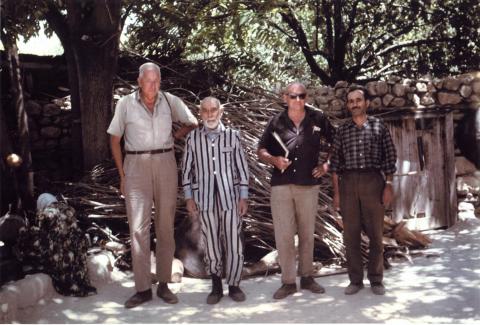
George (left), Terence Mitford (second right) and Turkish hosts, 1964 (G4.1)
Recording the ancient landscape and inscriptions that he encountered along the way, George also had two significant traveling partners: the classicist Terence Mitford particularly in the 1960s, with whom he produced academic publications, and, from 1959 onwards, his wife Jane Bean. Jane had been teaching at the English High School for Girls on Istiklal Caddesi since 1952 and quickly became an archaeological enthusiast.
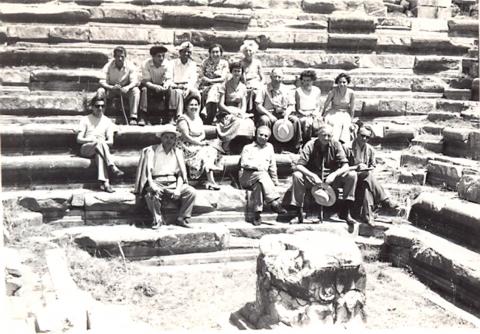
George (second right on front row), Jane (directly behind), unknown location, 1950-60 (D5.1)
During the 1960s, George was working on a series of guide books to ancient Turkey, which are still popular today. He continued to spend much of his time traveling and, even when he had retired in 1971 and returned to England, George traveled back for fieldwork in 1972. He continued to return to Turkey, the country where he had lived for 27 years, and was out in Turkey in 1977 when he was taken ill, dying at his home in Lavenham that year.
Archaeology was not George's only legacy. As man of tall stature (6ft 6inches), George was a skilled badminton and tennis player. He was captain of the Surrey Badminton Team for 10 years, and playing doubles at Wimbledon for over 6 years. George was certainly a man of many talents.
Further reading
- 'Rough Journeys: George Bean & Terence Mitford', Barnaby Rogerson
- An Obituary (pdf), St. Paul's School, London (kindly annotated by Jane Bean)
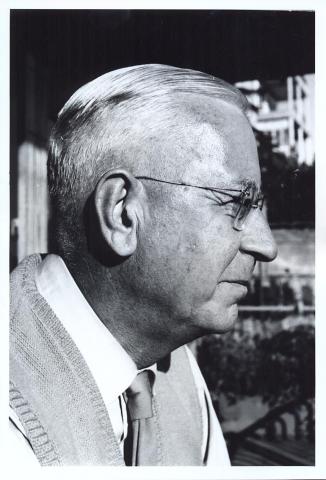
George, 1965 (G1.1)

